As a child, I was afraid of spiders. I was one of those girls who ran away at the sight of any creepy crawly bug that was not either a ladybug, butterfly, or roly poly. Of course I only liked those delicate bugs, not the ones with venom or stingers or other built-in measures to defend themselves. A bug with a sense of boundaries, heaven forbid. I used to be one of those girls who made other people–usually boys or men–smash the nasty bugs for me.
I didn’t see the irony or hypocrisy of my fear, as a girl who got called boyish, called out for being too rough, too temperamental, too strong, too aggressive for my sex. A girl who rejected pink in kindergarten when she realized that pink being every girl’s favorite color was a giant brainwashing scam. A girl who loved climbing trees, digging in dirt, and anything that put blisters on her hands. I didn’t see the hypocrisy yet of despising the invertebrates’ matriarchy.
My opinion of bugs started to shift as I entered my teens. The beauty I saw in an invertebrate’s form became greater than any childish disgust I had for something that looked alien. I began to love crustaceans, bees, moths, beetles, centipedes, and millipedes. They started appearing in my art. But I still didn’t like spiders. I knew it was irrational. I knew enough facts about spiders to understand why they were important. I knew it didn’t make sense for girls to disproportionately dislike spiders more so than boys. I loved Charlotte from Charlotte’s Web. But like all types of irrational, angry people, I couldn’t explain why I disliked or feared spiders so much, or why no amount of reasoning or facts could sway my mind.

I had to get over my fear of spiders long before I could begin to love them. And I admit, this didn’t happen until I was 23. I had just broken up with a long-term boyfriend and decided to be the one to move out of our apartment. It seems that it is always in the midst of large life shifts that we are often struck by the smallest realizations, like the memories of who bought which plates, or what it means to inherit someone else’s family recipes, or that for the first time ever I might have to be responsible for removing the spiders from my home.
No number of facts about spiders, no amount of knowledge of how I was fitting exactly into the social construct that women should fear spiders and other “dangerous” things, had been enough to change my mind. But in one moment I accomplished what I hadn’t been able to in the 23 years prior. I decided I wasn’t afraid of spiders anymore.
In retrospect, I’m pretty sure this was the rite of passage from girlhood to womanhood, from feminism as an idea to an action.
I say “rite of passage” because it takes maturity in order to challenge one’s own deeply ingrained beliefs and unmoor irrational fear. I had to stop hating and fearing spiders before I could face them. I had to start facing them to catch and kill them before I could realize I didn’t want to kill them. I had to start facing them before I could begin to love them.
As I began to love them, I questioned why I had ever feared them, and I began to feel ashamed. The biggest, most frightening spiders are always the females. They are larger and stronger than the males and do not mate without giving their consent. They build their own homes, they hunt their own food, they rely on no one, while also keeping their local ecosystems in check and balance. They are independent, powerful, single mothers who spin their own worlds out of silk. They are wise widows who carry on. As it is with all powerful women, other women and girls are taught to fear and mistrust them, and men are taught to strike them down.
I made a friend the spring of 2017, a bright white orb weaver with black spots, as large as a quarter. She lived in the side view mirror of my car.
At first, I could never find her. I only saw that every morning, a brand new web was stretched between the side view mirror of my car and the window, speckled with the previous night’s killings. It wasn’t until I ran an errand at night that I finally spotted her and saw her scurry inside of the side view mirror, where she lived most of the day.
Over the course of the summer, I watched her and her web grow. Her web started as a wispy thing that would blow off my car as soon as I turned out of my parking lot and hit 20 miles per hour. By the end of summer, she had strengthened the web to the point that I could make the 1.5 hour drive to Milwaukee at 80 miles per hour and still have a web firmly attached to the side of my car, and little white dots firmly glued to my car’s window when I would brush the web off. She had a summer lover and other little webs started appearing on my car, under the doorhandles, in the opposite mirror. She spent her whole life living on the side of my car, until one morning there was no new web, and I glimpsed behind the mirror to see her curled up in a morning slumber.
The past few summers have been bountiful for spiders here in Madison, especially between the lakes. Recently, while working on a mural, I saw a long spider web spanning 6 feet between two street signs, as readily poised to catch a human as a bug. When I looked close enough, I could see miniature webs within the big web, the delicate first homes of baby spiders. Here, barely visible in the glint of the sun, was the quiet, continuous work of a mother spider laying infrastructure that future generations might flourish upon.
I wrote this journal entry two years ago and tucked it away. I hope it is meaningful that I share it today.
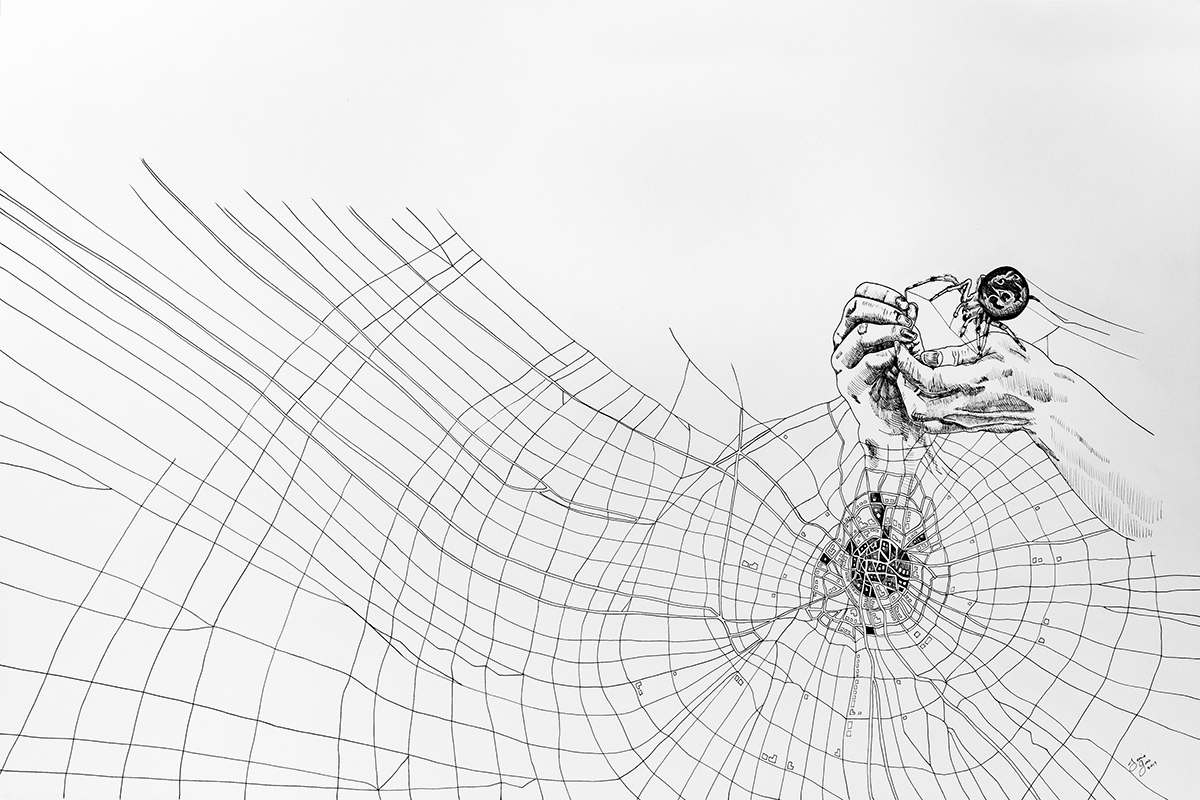

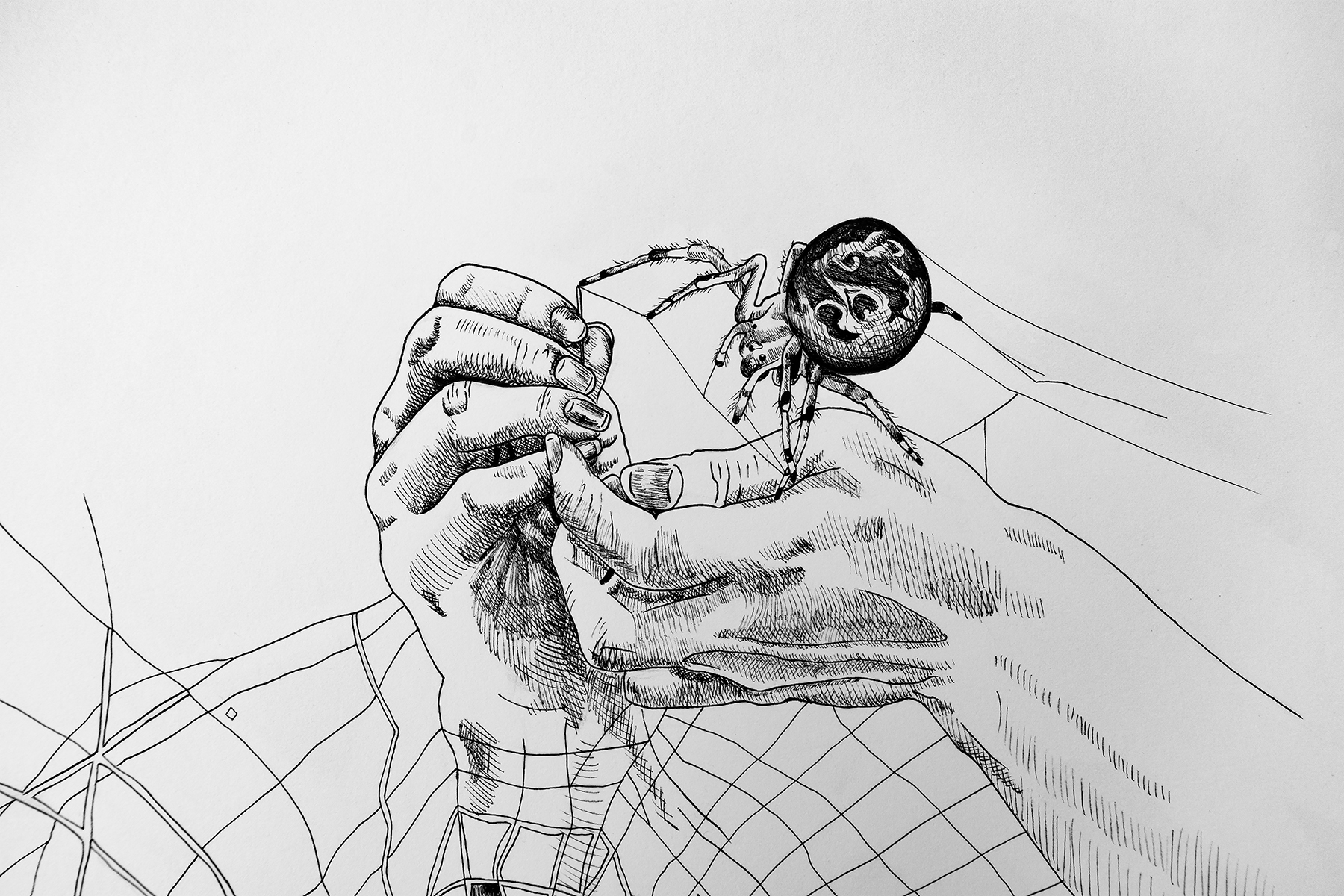
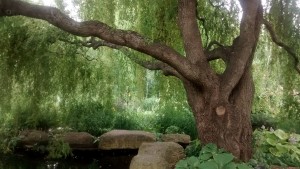
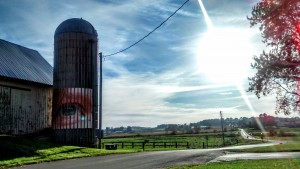
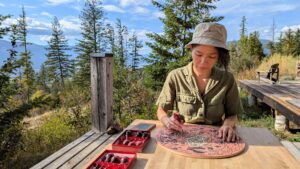
Thanks for sharing Jenie. I too overcame a childhood fear of spiders on my own. I recently befriended a very large one in my shed that I look for every time I go in there. I even named it. It wasn’t there when I went for a tool yesterday, but I’m thinking it was just down in its burrow or something.
Thanks for sharing, Beau! What did you name the spider in your shed?
Jenie, I love this message! In particular, thank you for sharing this idea so powerfully:
“As I began to love them, I questioned why I had ever feared them, and I began to feel ashamed. The biggest, most frightening spiders are always the females. They are larger and stronger than the males and do not mate without giving their consent. They build their own homes, they hunt their own food, they rely on no one, while also keeping their local ecosystems in check and balance. They are independent, powerful, single mothers who spin their own worlds out of silk. They are wise widows who carry on. As it is with all powerful women, other women and girls are taught to fear and mistrust them, and men are taught to strike them down.”
We can practice mindful respect and appreciation of spiders and correct our mind or companions when we suggest that a spider wants to hurt us and so must die. In that moment, the spider is incorrectly labeled a negative, and for that deserving to die. This is such a violent lie about the spider’s intentions. They have no interest in biting people. It’s all in our heads; and is not correct. Therefor, we don’t need to kill them. We only kill them in order to extinguish our fear response to their presence and turn off our scared awareness of their co-existence in the space. Or to not want them sharing space with us.
Is this faulty reasoning, this lie, this incorrect idea that something different and powerful might want to hurt us – is it about avoiding pain to our ego? Pain to the ego from realizing and admiring the power of another creature who is so amazing and also different and disconnected from us?
We can gain so much by resisting our fear and ego spoiling of negatively labeling others as wanting to hurt us. By practicing acceptance of fear and humility, and seeing it as learning signals, we can discover more about how amazing and good the world is outside of ourselves. Like building a web of insight and connections.
Thank you for helping shine a light on the good truth about spiders, and women!!
I’m glad this anecdote resonated with you, Sky, and thank you for taking the time to share your thoughts and insights as well!